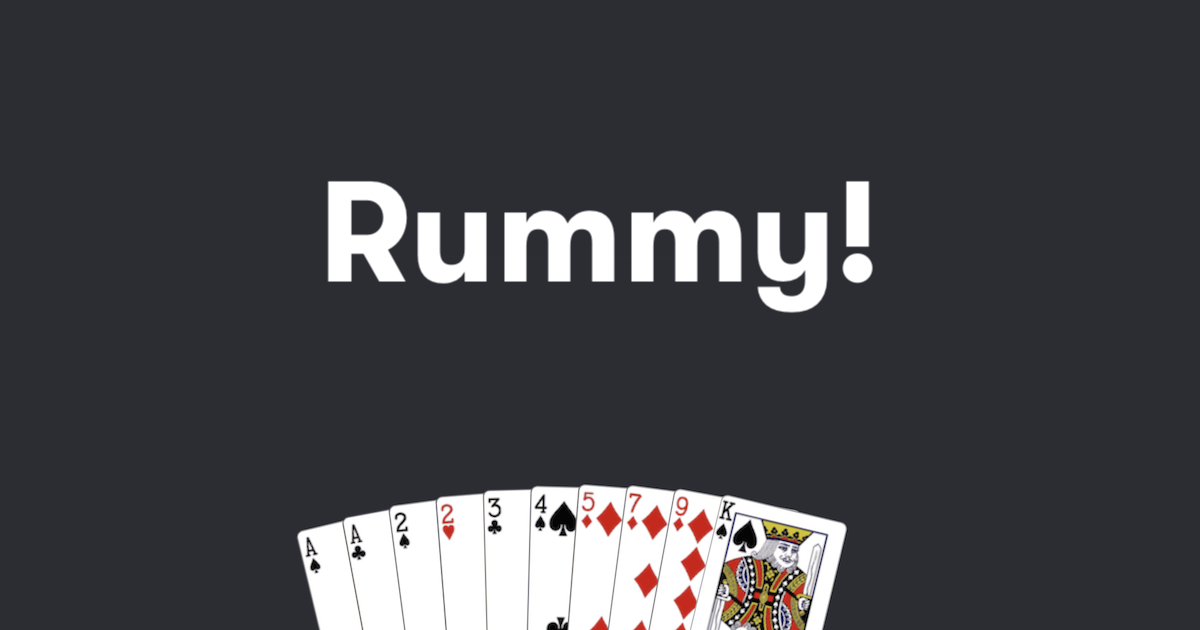If you follow sports, keep in the game with FindLaw's sports law blog. Business of Law FindLaw's legal professional blogs provide attorneys and other legal professionals with the latest news and information that affects the legal profession uniquely, focusing on legal technology news, practice tips, and firm management information.
Are you tired of staring at a screen? Looking for a way to spend quality time with your family and friends that doesn’t revolve around movies, TV shows, or video games? Learning how to play gin rummy might be the perfect solution! Gin rummy is a family-friendly, easy to learn card game beloved by millions, and learning how to play gin rummy will give you and your family a way to create memories that will last a lifetime!
Rummy refers to a collection of card games that all have a similar method of play. Rummy games are “draw and discard” games, meaning that each round, every player draws one or more cards and discards one or more cards; the number of cards depends on the specific game.
- Rummy card game is played between 2 to 6 players with 2 decks of cards. Each player is dealt with 13 cards and a random card is selected as wild joker or joker card of the game.
- Like all card games, rummy too is played with 1 or more decks. For example in 13 cards rummy, you will need 2 decks, for 21 cards rummy, 3 decks are necessary. In each rummy deck, there are 52 cards. The cards have ranks and are divided into 4 suits. Rank refers to the value of a card. Each card has a point value. In rummy, cards are ranked.
- Directions for playing a children’s version of rummy are included with the cards. This version still has “books” which are groups of the same animal, and “sets” which are groups of diamonds or clubs, or any suit. The idea is to get rid of your cards first. You can also build on others plays.
Rummy players draw and discard cards in an attempt to make melds or specific groups of cards. A meld can be made up of multiple cards of the same rank (three twos) or runs of consecutive numbers (cards of three, four, five, six). Each rummy game has a slightly different twist on this basic premise - when you learn how to play gin rummy, you will discover what types of melds you are trying to make and how many it takes to win.
Gin rummy is a two-player card game played with one standard deck of 52 cards with no jokers. In gin rummy, cards rank low to high, with Ace being the lowest and King being the highest ranking cards. The gin rummy variant of rummy was created in the 19th century when people wanted a version of rummy that would move more quickly than the traditional version. People have known how to play gin rummy for centuries!
In order to play gin rummy, all you need is a deck of cards, a pencil and a piece of paper for keeping score, and a willing player! Only two people can play gin rummy at a time, making it the perfect card game for spending some quality one-on-one time with your grandchild or friend. If multiple people want to play, consider setting up a homemade gin rummy tournament or playing another rummy variation game.
Before diving into learning how to play gin rummy, here are a few definitions that will help you learn how to play gin rummy even faster:
A draw-and-discard card game.
What a player says when he/she can put all of their cards into melds (sets and runs) and finish the round.
Any cards at the end of a round you cannot put into a meld (set or run).
A meld can comprise a set of cards of the same value (three twos, for example) or a run of numbered cards in order (five, six, seven, eight). A card can only be used in one meld. For example, if you have a set of three eights and the start of a run with the cards six and seven, you could not use one eight card in both melds. In gin rummy, the Ace card is always low - therefore it can't be placed after a king in a run.
Knocking to finish the round without fully going gin; the player who knocks must have 10 points or fewer of deadwood in their hand.

When one player knocks, the other player has the opportunity to add his/her deadwood to any fitting melds. This does not apply if a player calls gin.
The goal of the game is to have the fewest points in your hand at the end of each round (each card is worth a certain number of points - see above). To get rid of cards throughout the round, you can put your cards in melds (sets and runs) of like cards and consecutive cards. The player with the lowest point total at the end of the game wins.
Decide who deals the cards. In official gameplay, both players should draw a card and the player holding the lower card deals first. Then, both players take turns shuffling the deck, the non-dealer cuts the deck, and the dealer deals out ten cards to both players. Unofficially, decide who deals in whichever way you want! Most recent birthday is always a good bet, but flipping a coin or playing rock paper scissors are always good methods.
After the cards have been dealt, flip over the next card on the top of the deck (the twenty-first card) and set it face-up next to the face-down deck in the center of the table. Take a moment to let both players sort their cards (usually by suit and by number). Then let the play begin!

Just like all rummy games, knowing how to play gin rummy consists of knowing when to draw and when to discard.
The draw: The player who did not deal goes first.* The player can either draw the face-up card next to the deck (which will become the discard pile) or the top face-down card of the deck. You must draw every turn! If you draw from the face-down deck of cards; do not show your opponent what you drew. This is one advantage of drawing from the deck instead of from the discard pile.
The discard: Take one card from your hand and discard it, laying it face-up next to the deck. If you drew the face-up card from the discard pile earlier in your turn, you may not discard that card. If you drew a card from the discard pile in a previous turn, however, that card is fair game to be discarded.
*If you are playing by official regulation rules, beginning the game after the deal is a little trickier. The non-dealing player has the option to take the face-up card next to the deck, but if he/she doesn’t want it, the other player gets the chance to steal it and begin the game with their turn. Whichever player takes the card finishes their turn (with a discard), and if neither player takes the first face-up card, the non-dealer takes the top card from the deck and finishes their turn.
How To Play Rummy Cards

Play continues (back and forth, drawing and discarding) until one of two things happens: either one player calls “gin” or one player knocks.
Knocking: If you believe you have a better hand than your opponent (more melds), you can knock after the drawing portion on any of your turns. To knock, you must have 10 or fewer points in deadwood. After you knock (once, physically, on the table), discard one card face down on the discard pile and set out your melds for the other player to verify.
After a player has knocked and laid down his/her cards, the opponent also lays down his/her cards into melds. Now the opponent of the knocker can lay off additional cards (add his/her deadwood to melds from the knocker’s hand). The knocker cannot lay off cards, and cards can't be laid off onto deadwood.
Calling Gin: If you can put all of your cards into melds, after you have drawn a card, discard a card face-down on the discard pile and lay out your cards in melds for the other player to see and verify. While usually gin is made of two groups of three cards and one group of four cards making up the melds, it is fine to have two groups of five as well.
If play continues until there are only two cards left in the deck, the round is forfeited and the original dealer of the round shuffles and deals cards again.
Each card is worth a certain amount of points in gin rummy. Face cards (jack, queen, king) are each worth ten points, and aces are worth one point each. Number cards are worth their numeric value in points (for example, an eight is worth eight points). At the end of the round, only deadwood is included in the point totals.
At the end of the round (after a knock) both players count their points according to card scores. If the knocker has fewer points than the opponent, the knocker receives the point difference. For example, if Player A knocked and had 5 points and Player B had 8 points, Player A would receive 3 points.
However, if the knocker has more points than the opponent, the opponent gets the points and a bonus. So in the previous scenario, if Player B had knocked, Player A would gain 3 points plus a ten point bonus.
If a player calls gin, he/she automatically scores 20 points besides the other player’s deadwood total. Even if the other player has no deadwood (and therefore no points), the gin-caller still receives the 20 points.
The game of gin rummy is played until one player has reached 100 points. However, you can adjust the winning total to suit your needs - want a longer game? Play to 200. Need the game to be quicker? Play until 50. Knowing how to play gin rummy is a win all by itself!
How Many Cards Do You Get When You Play Rummy Rules
Learning how to play gin rummy is a fun, family-friendly activity for an afternoon or for a lifetime. There are almost as many varieties of rummy games as there are rummy players, and once you’ve learned one it’ll be hard to stop you from learning another!